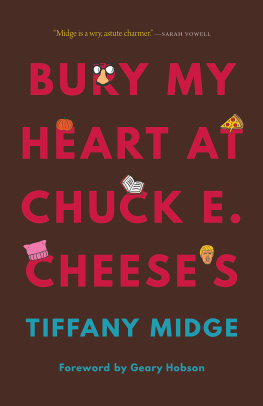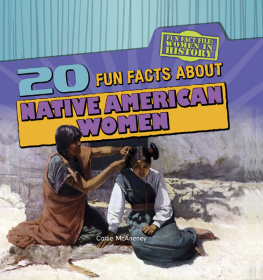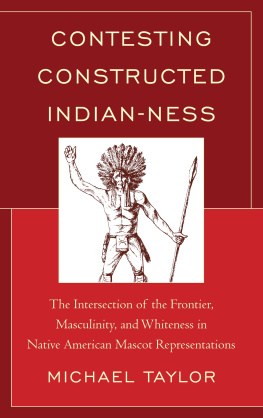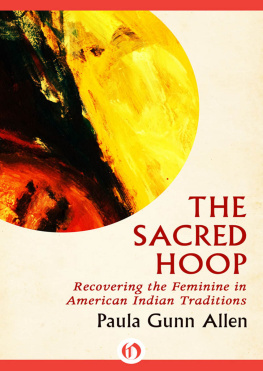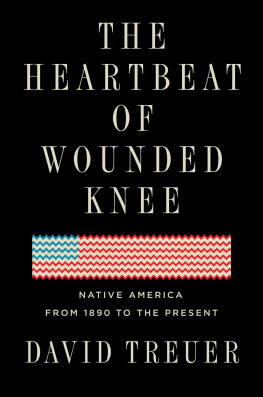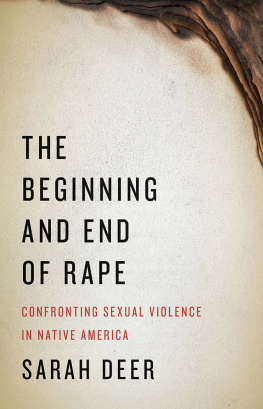
Midge is a wry, astute charmer with an eye for detail and an ear for the scruffy rhythms of American lingo.
Sarah Vowell, author of Lafayette in the Somewhat United States
Bury My Heart at Chuck E. Cheeses drives a spear into the stereotype of Native American stoicism. It is perhaps the funniest nonfiction collection I have ever read. But it is much more than funny: it is moving, honest, and painful as well, and looks at the absurdities of modern America. Midges collection is so good it could raise Iron Eyes Cody from the grave and make him laugh till he cries.
David Treuer, author of The Heartbeat of Wounded Knee
Tiffany Midge is the kind of funny that can make the same joke funny over and over again. Which means, of course, that she is wicked smart, and sly, and that she has her hand on the pulse of the culture in a Roxane Gay-ish way, only funnier, and that she has our number, your number, and my number too, all of our numbers. Which means she is our teacher, if we let her be.
Pam Houston, author of Deep Creek: Finding Hope in the High Country
Tiffany Midge is a gift, a literary comedic genius. Bury My Heart at Chuck E. Cheeses is chock-full of savagely clever and spot-on riffs about Native life combined with keen observations of the absurdities of pop culture. Where else can one find discussion of the use of ugh in American literature or of Anne Coulter and Delores Abernathy as judges in the post-election U.S. Open in Racist Tirades Competition? Adroit, snarly, essential, and inspiring. She knows our truths, so there is no use in hiding. Midge is among the very best indigenous writers. More, please.
Devon Mihesuah, author of Ned Christie; Choctaw Crime and Punishment; and Indigenous American Women

Bury My Heart at Chuck E. Cheeses
Tiffany Midge
Foreword by Geary Hobson
University of Nebraska Press | Lincoln
2019 by the Board of Regents of the University of Nebraska
Acknowledgments for the use of copyrighted material appear in , which constitute an extension of the copyright page.
Cover designed by L. Auten, University of Nebraska Press.
Author photo by Jay Dearien.
All rights reserved
Library of Congress Control Number: 2019005854
The publisher does not have any control over and does not assume any responsibility for author or third-party websites or their content.
For all my badass grandmas
Gag me with a coup stick.
NDN Valley Girl
Me: How do you say pseudo-intellectual in Lakota?
Sherwin B.: Siouxdo intellectual.
exchange on Facebook
Contents
Geary Hobson
Over time (too much time, if you ask me) Native American people have generally been portrayed by the dominant culture as being entirely without the least vestiges of humor. Stolid, dour, ready to pounce on you (if you are white) and take away that unnecessary scalp. (And of course, if you are Louis LAmour, thats all that Indians do!) Too much James Fenimore Cooper, Robert Montgomery Bird, William Gilmore Simms, Henry Wadsworth Longfellow, nearly every Puritan scribbler that ever waseven Mark Twain (the premier funny man of American letters himself), Hemingway, Faulknerand, oh, the list can go on. For them Indians are without the least flicker of a smile, a half-joke or two, a grin, not a tickle in the ribs, nothing. Despite such nearly ignored portrayals by Washington Irving in A Tour on the Prairies, in which at one point he describes some Osage warriors around a campfire, laughing and joking and doing drumbeats with fists on their chests, cracking up Irving and his fellow tourists with their anticsthis in 1832. Yes, non-Indian American people, humor does exist among Native American people. And much more present than the average reader probably seems likely to imagine.
But it has always been there, in the writing as well as the living. Washington Irving wasnt wrong. Just a glance at the writings by certain Native writers will effectively bear this out. Take the nineteenth century, the Century of Dishonor, when Natives were beginning to adapt to the reading and writing of the dominant culture in which they were being forced to become a partyou will find humor and often quite surprising at most times. Just as the postCivil War era knew the writings of American funny guy journalists such as Twain himself and Josh Billings, Peter Finlay Dunne (Mr. Dooley and Company), and others, there was a similar rise of Native American journalists as well in tribal newspapers of the day. DeWitt Duncan Clinton, Alexander L. Posey (Fus Fixico), Joseph Lynch (Uncle Joe) Martin, Woochee Oochee, Dan Madrano (for more on this, just check out the now-classic work by Daniel F. Littlefield Jr. and James W. Parins, A Bio-Bibliography of Native American Writing, 17721924). All this funny Indian stuff was actually made international in scope and outlook by someone who carried the humor of Indians to surprising heights and localesthe Cherokee writer, cowboy, and movie star Will Rogers. Some say, Hes a funny guy because hes mostly white. No, gentle reader, examine Rogerss humor more closely, and you will find that it is very much a product of the milieu he came from: relocated Indians doing their best to survive in the dominant culture into which they were dumped.
And Indian humor continues to the present day and, I strongly believe, grows more potent and deadly with each generation. Here are a few to scan for a laugh or two from the first wave of the Native American literary renaissance (196892): the Airplane Man segment of James Welchs now classic Winter in the Blood. Theres Simon Ortizs personal expressions and reactions attendant on the birth of his and the renowned poet Joy Harjos daughterRainy Dawnas he awaited Rainys coming into the world, in Notes for My Child, in which, though anxious and apprehensive, he records his experience with wonderful humor and humanity. And how about the work of Gerald Vizenor, Carter Revard, Jim Northup, LeAnne Howehere, without equivocation, you will find mucho laughs amid scenes of deep seriousness. And then, in the second phase of the Renaissance (1992 to the present), theres the hilarious plot line of D. L. Birchfields short story Never Again, in which a Choctaw brother persuades his sibling to accompany him on a long, several days hiking and camping expedition in the Ouachita Mountains, without telling the younger brother that a severe snowstorm is expected in the region and then gets a kick out of the whole thing when the younger brother is totally unprepared by wearing summerlike clothing and using a thin sleeping bag. And also by Donny Birchfield, how about the titles of two of his books: How Choctaws Invented Civilization and How Choctaws Will Conquer the World and The Oklahoma Basic Intelligence Test? Indeed, they say it all, with just about a laugh on every page. And how about Diane Burnss Sure You Can Ask Me a Personal Question, in which the poet lampoons certain non-Indians often dim-wittedness about the most basic things regarding Indians, such as why do they have black hair and high cheekbones? And of course, theres Drew Hayden Taylor and his Funny, You Dont Look like One (with three sequels) and Only Drunks and Children Tell the Truth as well as all the funny stuff to be found in the writings of Craig S. Womack, Tim Tingle, William S. Yellow Robe Jr., Richard Van Camp, Dawn Dumont, and Kateri Akiwenzie-Dammall, more often than not, as funny as a rubber crutch.
Next page
